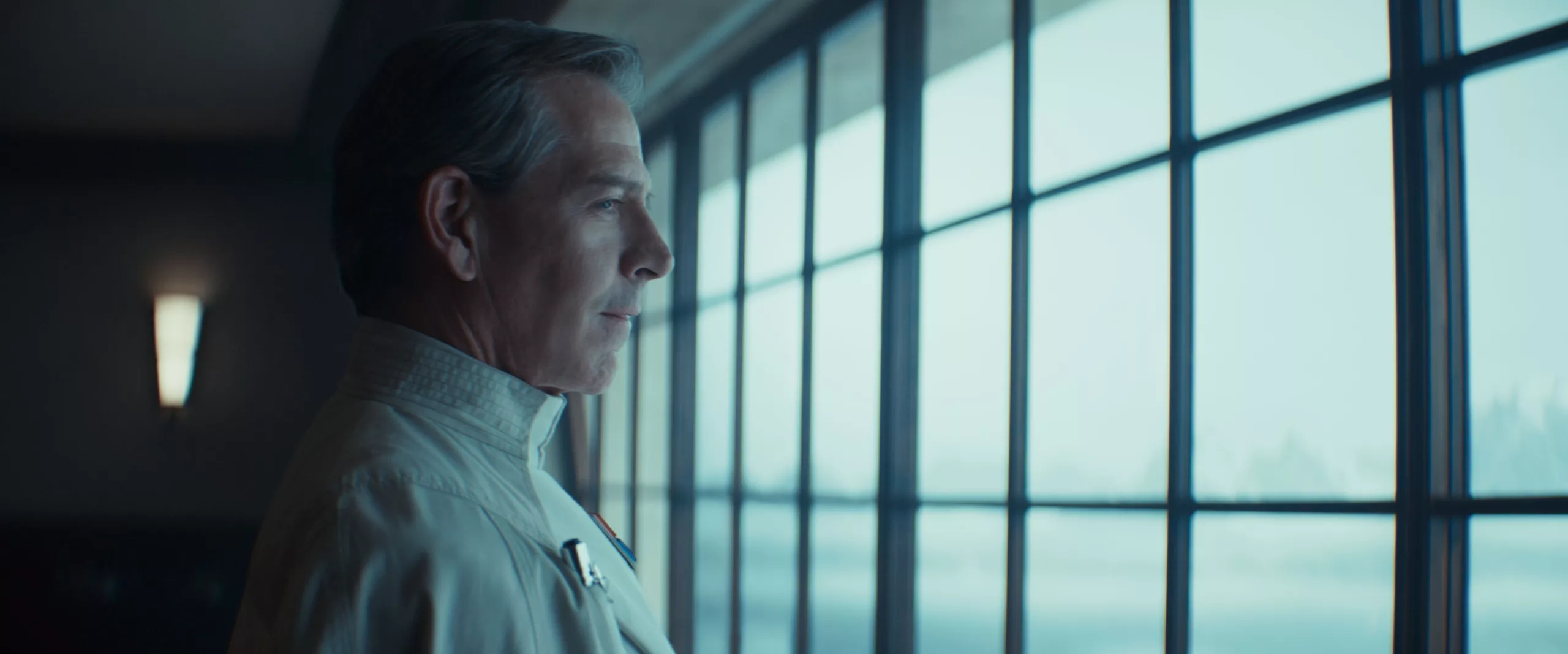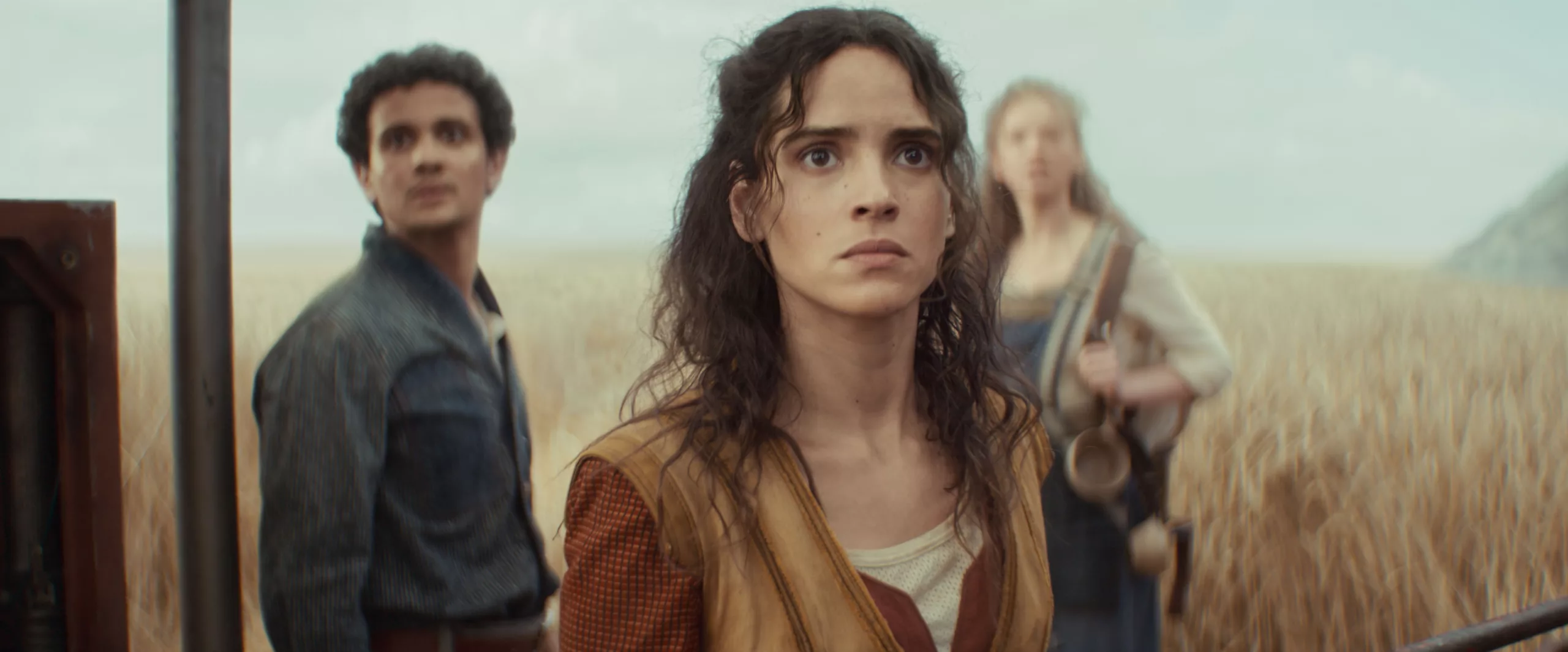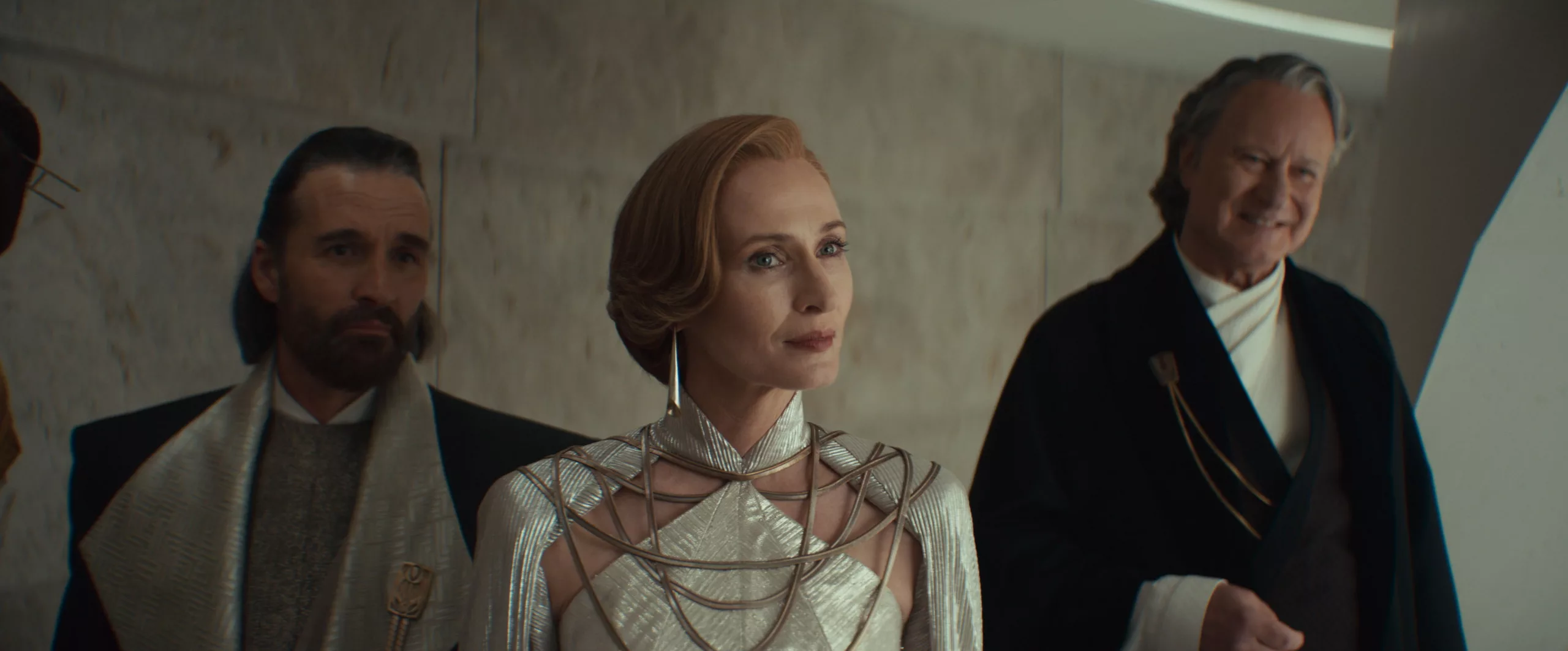“Andor” opens its second season with a micro version of what it does so well: a scene of sharp intellect about becoming who you are when you stand up for what you believe in, before pivoting to a larger-than-life “Star Wars Action Sequence” that comes out of nowhere and unfolds unexpectedly. It’s a great ten-minute season overture: Messaging that feels timelier than ever blended into grandiose sci-fi action storytelling that’s riveting within its own universe. This 12-episode arc, which really unfolds more like four interconnected feature films, is the best season of television so far this year, and one of the best of the current decade. It is what “Star Wars” (and all sci-fi TV) can be at its peak, and I hope it’s a roadmap to the future of this entire franchise. Let Andor lead the way.
The very structure of “Andor” this season is artful. Disney+ is dropping three episodes for four consecutive weeks, unfolding like a “quadrilogy” of feature films. Each night has a different writer. And, as most people know, the season takes place over four years. So, the first night debuts three episodes written by creator Tony Gilroy himself, set in BBY 4. The next week launches three episodes written by first-season Emmy nominee Beau Willimon set in BBY 3. Like a great film series, these chapters stand on their own while also folding their thematic concerns into each other. And the writers don’t completely dismiss the episodic structure either, with some chapters, especially 8 and 10, both masterful, standing on their own. It’s like a nesting doll of creative storytelling.
 Director Orson Krennic (Ben Mendelsohn) in Lucasfilm’s ANDOR Season 2, exclusively on Disney+. ©2025 Lucasfilm Ltd. & TM. All Rights Reserved
Director Orson Krennic (Ben Mendelsohn) in Lucasfilm’s ANDOR Season 2, exclusively on Disney+. ©2025 Lucasfilm Ltd. & TM. All Rights ReservedAnd creative it is. “Andor” avoids the common prequel problems by twisting and turning Diego Luna’s Cassian Andor from the first season to the one we know in “Rogue One” in unpredictable ways. It’s a show about the development of a rebel leader, but how Gilroy and company get from the first season premiere to the character’s introduction in “Rogue One” cosnsistently fascinates. Some complained that Luna was a bit too subdued in season one, but rewatching season one as a prelude to this review reveals how subtle his work is through the 24 episodes, as Andor goes from hesitant believer to a passionate leader of a Resistance.
What a Resistance it is. A lot will be written about the timeliness of “Andor” in an age when unchecked power and political resistance are in the headlines, but this is no mere “good vs. evil” piece of storytelling. It is about the complexity of resistance. It is about how what we do defines who we are, particularly in times of great conflict. The characters who suffer in this season of “Andor” are the ones who try to have it both ways, who give lip service to action but thrive off corruption. There are so many lines that I scribbled down in my notes, but one that stuck out was “It’s not up to us what we save and what we lose” when we choose to fight back. It’s a show about sacrifice and trauma, and how narratives are crafted, told more effectively than any political drama in years. As someone says, “one person’s rebel is another person’s terrorist.” It is so thematically rich that it can almost be overwhelming, and there are even more scenes of political machinations than the first year, but be patient with the slow burn of every plot thread. They all eventually ignite.
 Bix Caleen (Adria Arjona) in Lucasfilm’s ANDOR Season 2, exclusively on Disney+. ©2025 Lucasfilm Ltd. & TM. All Rights Reserved.
Bix Caleen (Adria Arjona) in Lucasfilm’s ANDOR Season 2, exclusively on Disney+. ©2025 Lucasfilm Ltd. & TM. All Rights Reserved.What really elevates “Andor” is the blend of theme and plot. The speeches about fascism and resistance turn words into action and convey the difficulty of doing so. We’re in a time of great amplification of rhetoric, but this show understands the power of both the message and the fist, the pace of both resistance and fascism. How do you use rebellions to further fascism? How does human frailty impact both? What about emotional connections? Are you willing to give up less when you have so much to lose?
It’s not all speechifying. Within these deeper themes, the writers of “Andor” take the time to unpack and examine how human beings respond to things like trauma and instability. The former comes through in Adria Arjona‘s phenomenal work as Bix, who was tortured last season and carries the weight of that into this one. She’s a major part of the sophomore outing and does the best work of her growing career.
Inspired by the first season and the closure of a two-season arc, everyone elevates this year. Stellan Skarsgård gives such richness to Luthen, a man who has been putting pieces in place for the resistance for a generation, and Elizabeth Dulau proves an excellent partner for him as the crucial Kleya Marki. Genevieve O’Reilly, Denise Gough, and Kyle Soller are all great this year too, and, of course, Ben Mendelsohn is always a welcome sight, returning to this universe as his villain from “Rogue One.”
 (L-R) Perrin Fertha (Allistair Mackenzie), Mon Mothma (Genevieve O’Reilly) and Luthen Rael (Stellan Skarsgård) in Lucasfilm’s ANDOR Season 2, exclusively on Disney+. Photo courtesy of Lucasfilm. ©2025 Lucasfilm Ltd. & TM. All Rights Reserved.
(L-R) Perrin Fertha (Allistair Mackenzie), Mon Mothma (Genevieve O’Reilly) and Luthen Rael (Stellan Skarsgård) in Lucasfilm’s ANDOR Season 2, exclusively on Disney+. Photo courtesy of Lucasfilm. ©2025 Lucasfilm Ltd. & TM. All Rights Reserved.“Andor” never forgets its technical elements, too, with sharp cinematography, dense production design, and a great score from Brandon Roberts that integrates Nicholas Britell’s work from season one into something rousing and new. And while some may bemoan a lack of action this year, when “Andor” does explode into combat, it’s as rivetingly staged as anything sci-fi has produced in a long time.
Where will “Andor” fit in the history of the most popular fictional franchise of all time? Given that kids will dress up more like Luke, Darth, Han, and even The Mandalorian on Halloween for generations to come, it’s tempting to say it won’t have the same cultural footprint. How could it, really? I hope that it’s in the DNA of future “Star Wars” storytelling, reminding those who follow what this universe can be at its best and the potential of all science fiction: not just a vision of the future, but a mirror of the present. If we’re lucky, Cassian Andor’s legacy may just be starting.
Whole season screened for review. Premieres on April 22nd on Disney+.

.jpg) 6 hours ago
1
6 hours ago
1
 English (US)
English (US)